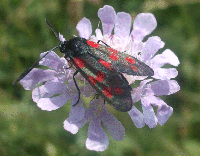When to Watch Wildlife |
J | F | M | A | M | J | J | A | S | O | N | D | Search |
|
Current wildlife highlights |
||
|
What's new on this site |
||
|
Wildlife calendar |
||
|
Plants and Animals |
||
|
Habitats |
||
|
Wildlife sites |
||
|
WWW links |
||
|
Guide Books |
||
|
||
|
© PMcS 2006 |
Parks and Gardens |
|
Parks and gardens, and other urban habitats, provide an extremely valuable refuge for a wide variety of wildlife. Urban foxes stalk the streets at night to the hoot of tawny owls and the rustle and chomping of hedgehogs. Peacock butterflies feast on buddleia, whilst many different birds regularly feed at garden bird tables and dip into bird baths. Thousands of home owners also encourage nesting through putting up bird boxes for blue tits and some even encourage bats into their gardens. Whist snow drops poke their heads through the frozen soil in early spring the birds such as great tits and mistle thrushes are already singing as heralds of warmer months. Later on black birds and song thrushes may start to wake you with a deafening dawn chorus before you are ready to get up! Many plant species, such as the beautiful purple spikes of rosebay willow herb and yellow flowers of oxford ragwort, can be seen to thrive in our towns and cities. These habitats have become incredibly important to the survival of many wildlife species and they return the favour by providing hours of enjoyment to those who chose to watch them. Cities also provide exciting wildlife spectacles such as great sweeping flocks of chattering starlings or the more dainty pied wagtails circling over our heads at roosting times. As mentioned urban foxes are now common place and can even be found in greater numbers in towns and cities than in the countryside. Seagulls such as black-headed, black-backed and herring gulls are common place, but in some cities if you are lucky enough you can spot peregrine falcons and even kittiwakes! Some cities support ancient commons or linear parks where dogs walkers can enjoy an oasis of green and grey squirrels and even rabbits are common. Occasionally old meadows are found in areas that have escaped development. More spookily graveyards can support many wild flower, grass and butterfly species, especially if not totally manicured. It is important to be sensitive to wildlife by not being too tidy in the garden, avoiding pesticides and definitely NOT using peat-based compost which comes from non sustainable sources. Feeding wild birds with seed and plain peanuts from the pet suppliers, fat balls or scraps from the kitchen and located out of the reach of cats is highly recommended. If you start feeding in Autumn Although you can feed at any time of the year) you should certainly not stop until well into spring when food is once again plentiful. Providing water is almost more important especially when very dry or when the weather is freezing as birds need it for drinking and bathing. Try to keep food to a level eaten by the birds each day or you may encourage rats. It will take several weeks for birds to find the food so do not give up if there is little initial interest shown. Go to the following sites for more information on gardening and wildlife:
|
|
|
All images and text are copyright PMcS 2006
